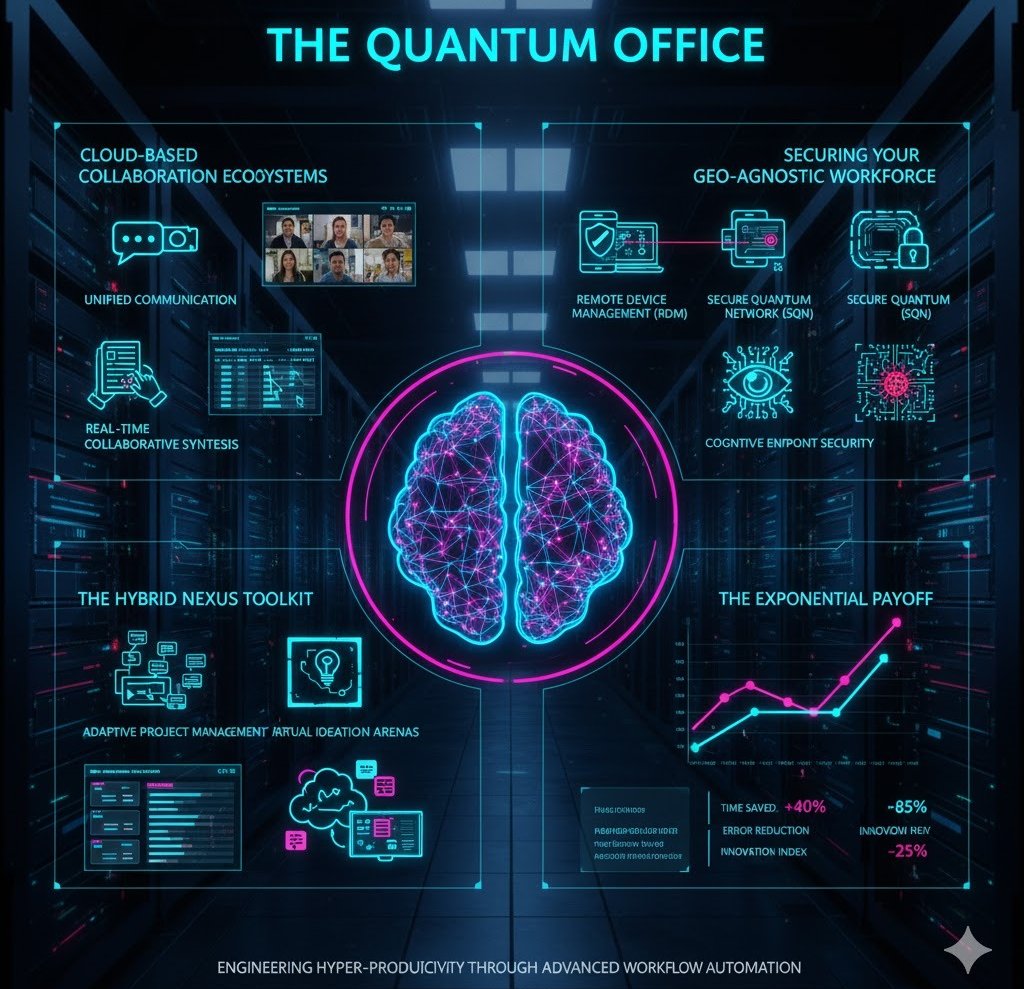The Smart Office: IT Solutions for a Seamless Hybrid Work Experience
Mr. Hunain Panjwani
10/5/20252 min read


SEO Idea: A detailed blog post for IT and business leaders on the essential technology and infrastructure required to support a secure and productive hybrid workforce. It will cover key areas like communication, collaboration, and security.
SEO Keywords: hybrid work technology, remote work solutions, IT infrastructure, digital workplace, unified communication, collaboration tools.
The shift to a hybrid work model has blurred the lines between the office and the home, making a seamless and secure digital experience a top priority for businesses. This new reality demands a strategic approach to IT infrastructure, one that ensures employees can be productive and connected from anywhere. The goal of the "smart office" is not to replicate the old office experience but to create a new, flexible digital workplace powered by the right remote work solutions.
The Foundation: Cloud-Based Collaboration Platforms ☁️
The cornerstone of a hybrid work model is a cloud-based platform that centralizes communication and document access.
Unified Communication: Platforms like Microsoft Teams or Slack are no longer just for team chat. They serve as a hub for unified communication, integrating instant messaging, video conferencing, and file sharing into a single, seamless interface. This ensures that every conversation and document is accessible to all team members, regardless of their location.
Real-Time Collaboration: Tools like Google Workspace or Microsoft 365 allow for real-time collaboration on documents, spreadsheets, and presentations. This eliminates the need for version control and ensures that teams are always working on the most up-to-date information, promoting efficiency and speed.
Securing Your Workforce, Anywhere 🔒
With employees working from home, coffee shops, and shared workspaces, securing your company's data has become more complex. Your IT infrastructure must be built to protect sensitive information, no matter where it's being accessed from.
Remote Device Management: IT teams need to be able to securely manage company-owned devices, whether they're in the office or a thousand miles away. Mobile Device Management (MDM) solutions allow for remote configuration, security updates, and data wiping in case a device is lost or stolen.
Virtual Private Network (VPN): A VPN creates a secure, encrypted connection for employees to access the company network. This is a critical line of defense, ensuring that data is protected from potential threats on public or unsecured Wi-Fi networks.
Endpoint Security: Every device, from a laptop to a smartphone, is a potential entry point for an attack. Endpoint security solutions use AI and machine learning to monitor devices for malicious activity and block threats in real-time, providing a layer of defense at the source.
The Hybrid Toolkit: Essential Collaboration Tools 🛠️
Beyond communication, specific collaboration tools are essential for recreating the in-person experience in a virtual setting.
Project Management Software: Tools like Asana, Trello, or Monday.com provide a centralized, transparent space for teams to track tasks, set deadlines, and monitor progress. This is crucial for project management for startups and ensures that everyone is aligned on goals and responsibilities, regardless of location.
Digital Whiteboards: For brainstorming sessions and visual collaboration, platforms like Miro or Mural offer a virtual whiteboard space where teams can visually organize ideas, create flowcharts, and sticky-note brainstorms just as they would in a physical meeting room.
By investing in these strategic hybrid work technology solutions, businesses can build a secure, connected, and productive digital workplace that is prepared for the future of work
